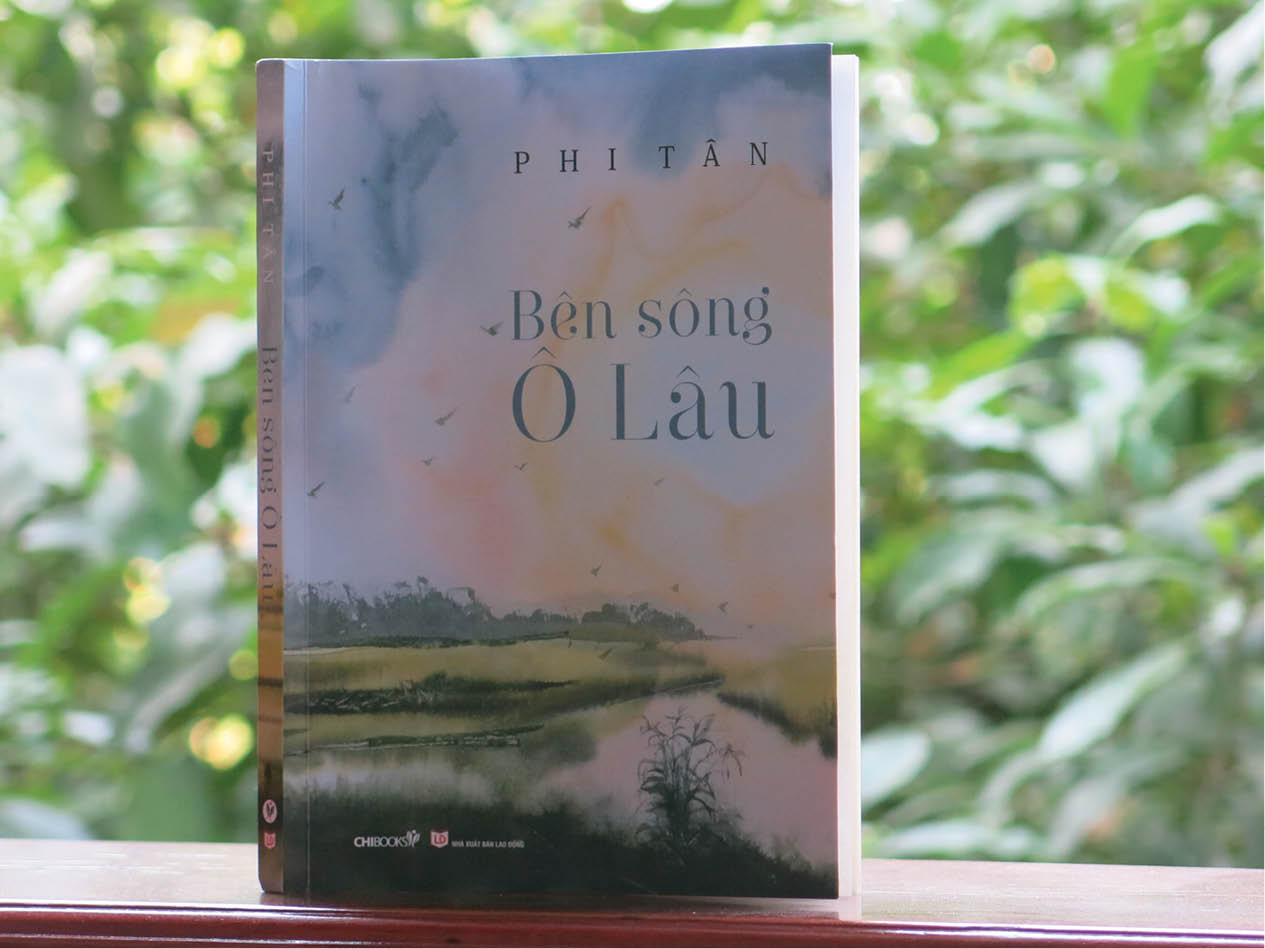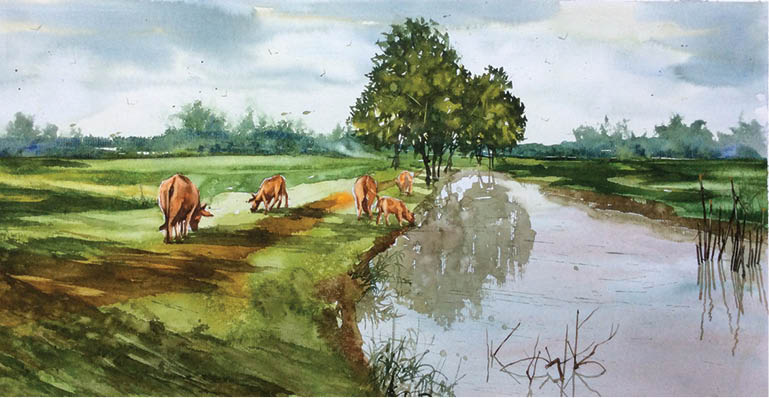
The prose book “By the O Lau River” about memories of the countryside by Phi Tan
After "Missing the Suburb,” Phi Tan has just released his prose book "By the O Lau River.” The book consists of 57 pieces about his unforgettable memories of the countryside, family, love, friendship, the childhood river, mom’s dishes, “people of the past years,” etc.
To Phi Tan, the countryside by the O Lau river is the hedge of bamboos, the straw stack, the creek, the cinema or theatre nights, the countryside market, his friends and people’s unique accent. The author describes a cultural space imprinted in his mind with modest countryside people and their daily life in the 1980s-1990s of the last century.
Growing up in Dien Loc, Phong Dien, although he has left it for the city for more than 30 years, Phi Tan very often visits his native village. Seeing changes there, he recalls days, scenery and people of the past.
"The happiness of my childhood was when I went to the market on Tet. I remember toy animals and objects of different colors made of pastry in the shape of a bunch of bananas, a duck, a chicken, or a boat, etc. It was as if Mom was bringing Tet home from the market when I saw the orange color of carrots, the green color of cauliflowers and cabbages, the red color of tomatoes, and the brown color of wood-ear mushrooms,” recalled he in the article "Missing the Countryside Market at the End of the Year.”


“The Suburb” painted by Phan Vu Tuan printed in the book as illustration
Through stories of the countryside, the author implies the philosophy of living in harmony with nature. Thanks to it, people still survive in their rustic houses, and the village still prospers despite natural disasters.
“I still remember the big flood in 1983. My father carrying his mom and his children clung to the bamboos to safety. When the water receded, we found our home items drifting to the garden were kept for us by the bamboos…” (from the article “My Bamboo Hedges.”)
Countryside memories and stories appear naturally on each page of the book with lots of emotion, as introduced by Chibooks: “Memories of the countryside by the O Lau river in Hue with modest and peaceful people keep appearing on each page of the book by Phi Tan and get stronger over the years, but can never sink into oblivion…”
With a simple, sincere but liberal writing style, every line, every word in “By the O Lau River" is loaded with love and nostalgia. Readers, especially aged ones, feel like they are returning to their native villages in their mind and heart. It is rewarding for them to hear again the dialect of the countryside of Hue with the words "mô, tê, răng, rứa”, “cười bò lăn bò lóc” employed naturally in the book.
"By the O Lau River" is the collection of articles written by Phi Tan in the past 3 years, starting with the story "Sacred Native Village" and ending with "My Bamboo Hedge". Those are real stories that he records with lots of emotion.
“I went to the village school. My parents were farmers. My childhood in the countryside was filled with pleasures and sweet feelings of hunting days for crabs and snails in the summer sun. Like many other villages, my native village has changed a lot now. Hedges of bamboo have been replaced by concrete fences. The rustic lifestyle, the landscape, the nature, the environment, the behavior among villagers, customs, practices, the traditional farming, traditional fishing tools, etc. are on the verge of being lost. I feel so regretful about it. If I don't write, then the next generations will no longer know. That's what I’m concerned most,” said he.
Dr. Nguyen Thi Tinh Thy, lecturer at the Department of Literature at College of Education, Hue University called Phi Tan the man who collects the past “because he diligently and passionately collects pieces of the past then stores them in his cherished box. Everyday he opens the box to take a look at them, then smiles and cries for the past which is disappearing today.”
The book comes attached with a set of paintings by Pham Vu Tuan (currently living and working in Hue) as a gift about peaceful countryside landscapes, rivers, poetic streets, etc., which Tuan painted in his drawing journeys.
“Perhaps the similarity in theme, perspective and emotion between my landscape paintings and the stories in "By the O Lau River" is the reason why Chibooks chose my paintings as illustration for the book. I have read Phi Tan’s essays and found those similarities perhaps because we are both from the countryside. My paintings are not to please the viewer only, but imply stories about the past, the present and the future,” said Pham Vu Tuan.
Story and photos: TRANG HIEN